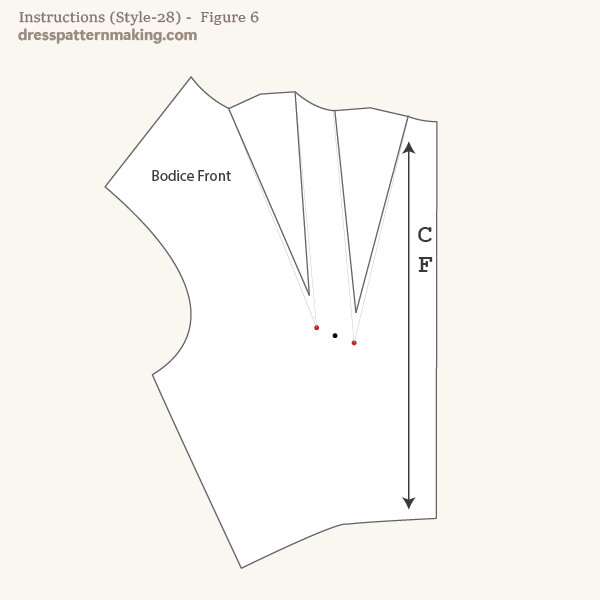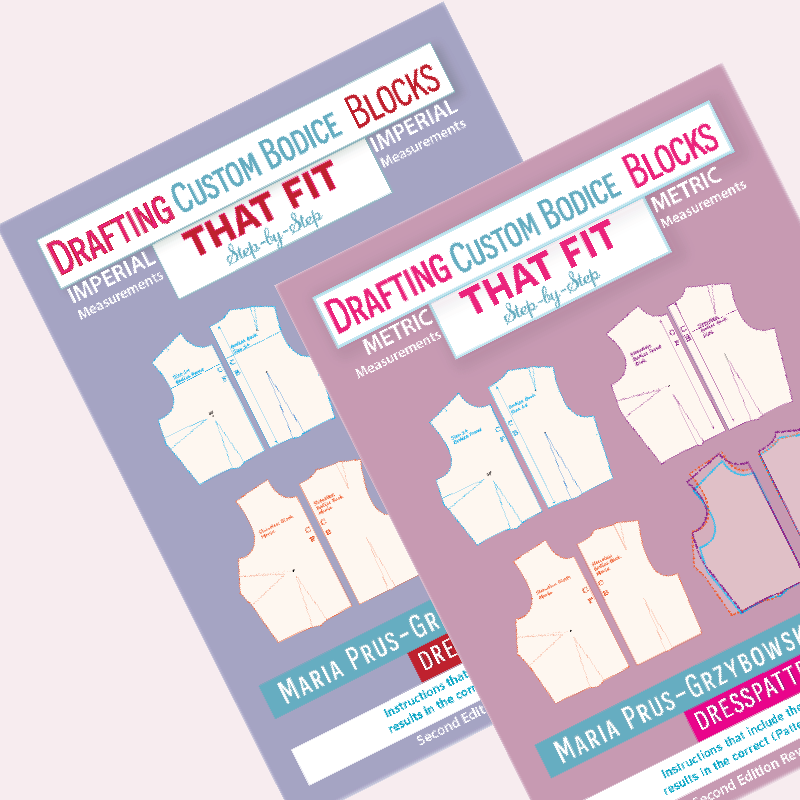Bodice Front Style 28
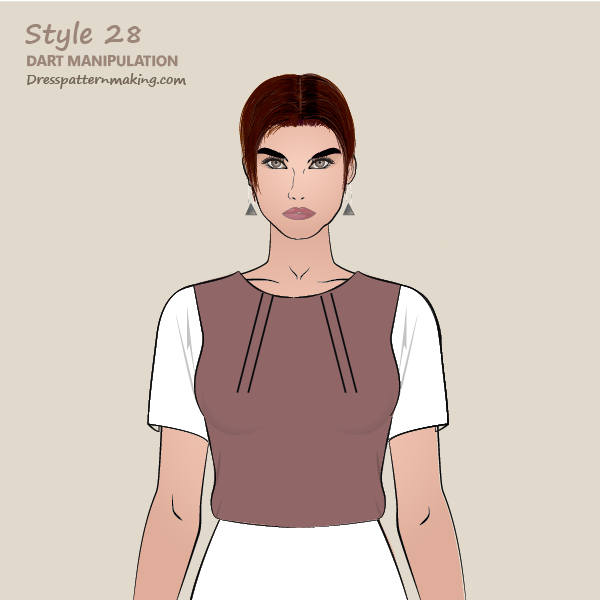
The bodice of this garment has two parallel darts in the neckline of the half-block.
Example: Outcome
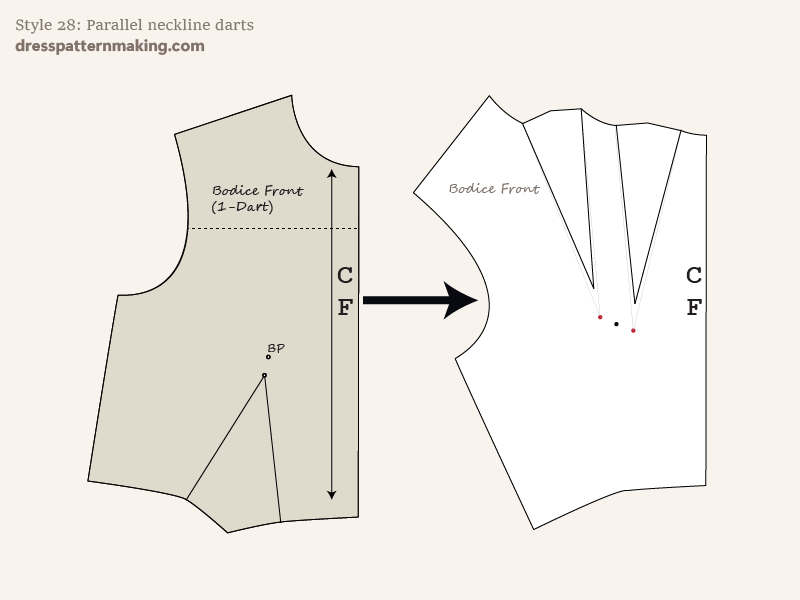
Figure B shows the block being used on the left (1-Dart Block), and the pattern that will be created (Style 28) on the right.
The focus of these instructions is covering the theory and practice of manipulating darts and the exercise finishes after the dart manipulation has been done. For production ready patterns you would need to take further steps to add seam allowance, pattern labels, pattern piece numbers, the grainline, etc.
Note
In this example, the radius of the circle for the alternative Pivot Points is .75 inch (therefore the diameter is 1.5 inches). This is less than for the previous style (Style 28) as, when looking at the flat and placing the parallel darts in the neck, it seems that these darts are closer together than in Style 28. Note that the 1 inch diameter used in Style 28 is the maximum you should use to place alternate Pivot Points; more than this will create distortion. Using less, as in this case, is not a problem.
Instructions (Style-28) - Figure 1
Note that in the instructions, color is used for emphasis, so it can be seen more easily, particularly in the current step. You will be using a hard (4H-6H pencil). In this exercise, we will not be pivoting on the Bust Point. This is because we are creating parallel darts, and by it's very nature, both darts cannot be pointing towards the same point. See the page on Complex Dart Manipulation if you have not already done so (if you click on the link, it will open in a new window).
- Draw a circle, with the Bust Point at the center, with a radius of .75 inch (2 cm). This means the diameter will be 1.5-inches, and the parallel darts will be 1.5 inches apart.
- Draw a line from one side of the circle (Pivot Point 1, where the arrow tip touches the circle) to the neckline.
- Draw a parallel line to the first line, from the other side of the circle (Pivot Point #2, where the arrow tip touches the circle) to the neckline.
Since the darts are parallel, the distance between the two dart lines is the same for the entire length.
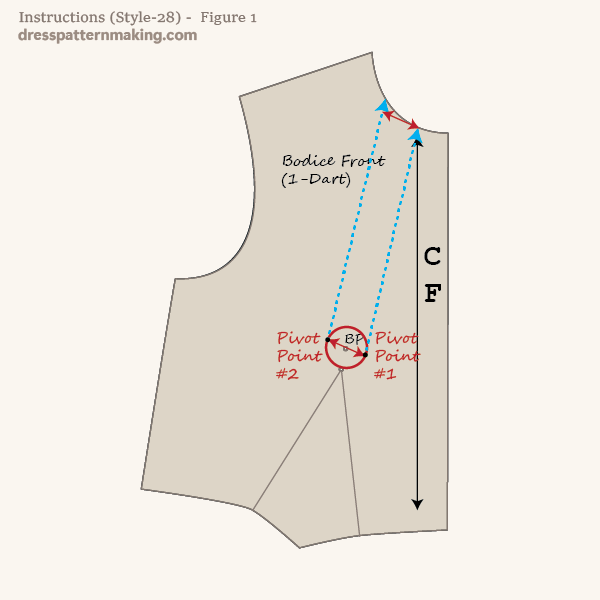
Instructions (Style-28) - Figure 2
- Extend dart leg A out onto the paper for some distance.
- Trace the block from point D in the neckline around to dart leg A in the waist.
- Mark the Bust Point AND Pivot Point #1 AND Pivot Point #2 on the paper underneath by piercing holes through the cardboard with an awl.
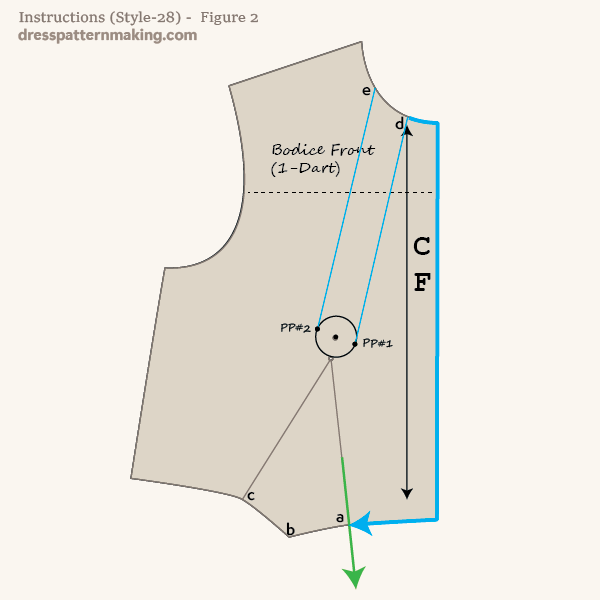
Instructions (Style-28) - Figure 3
- Hold down the block at Pivot Point #1 (NOT the Bust Point), turn the block in a anti-clockwise direction and close half the waist dart. Closing half the dart means that the mid-dart point B will reach the green arrow.
- Trace the block from point D to E (in-between the two parallel dart lines).
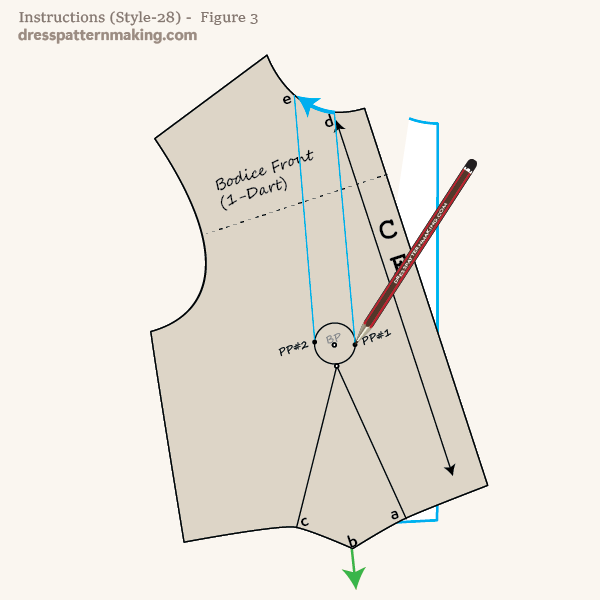
Instructions (Style-28) - Figure 4
- Holding the block at Pivot Point #2 this time, turn the block in an anti-clockwise direction and pivot the rest of the waist dart closed; i.e. until dart leg C reaches the green arrow.
- Finish tracing the block from point E to point C.
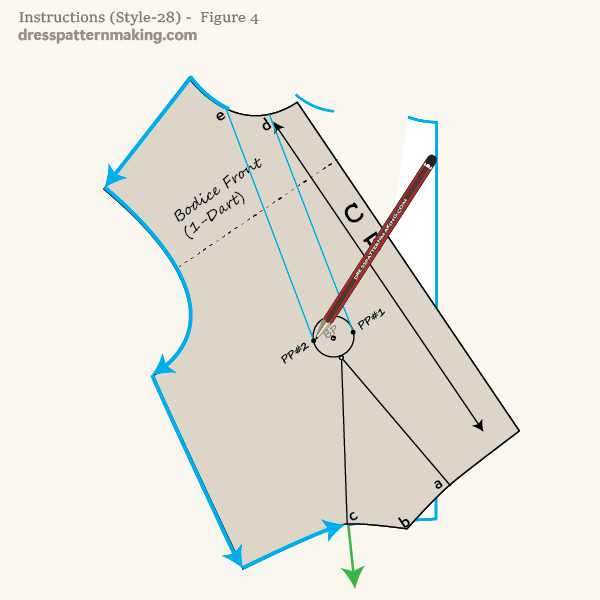
Instructions (Style-28) - Figure 5
You can lift up the block and put it aside.
- Draw the dart legs to PP1 and PP2.
- Make sure the dart legs for each dart are the same length; some small adjustment may be required. (Pivoting on points other than the Bust Point will create some small errors).
- Blend the waistline if needed.
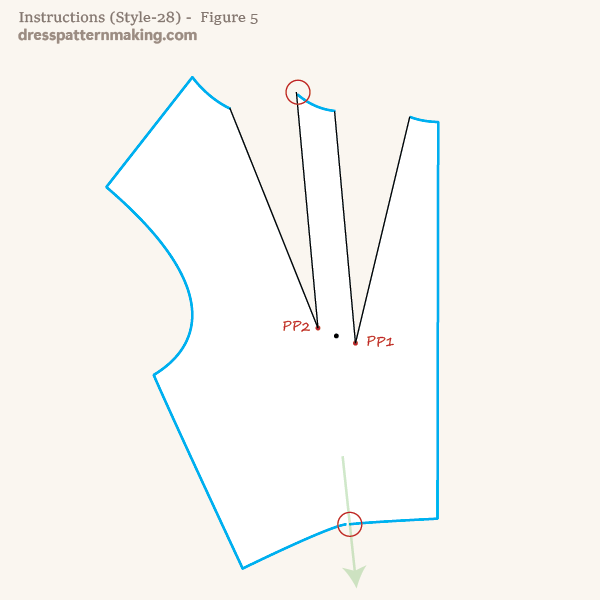
Instructions (Style-28) - Figure 6
- Finish off the darts, remembering that the Dart Point stops some distance before the Bust Point, and in this case even further than would be the case when the dart is pointed to the Bust Point.*
- For a production ready pattern you would need to add seam allowance, cutting instructions, grainline, label the pattern piece, etc.
*Note that when the Dart is not pointing towards the Bust Point, the Dart Point needs to be further away. For example: with one dart pointing towards the Bust Point, the Dart Point finishes about .63-inch before the BP (for a B-Cup). In THIS case however, using Pivot Point 1 & Pivot Point 2 as alternate Bust Points, the Dart Points need to be quite a bit further away than .63-inch. See the explanation on Complex Dart Manipulation if you have not already done so. If you are unsure about how to finish off the dart, see the pages on Finishing off Darts, which gives a few step-by-step examples.
